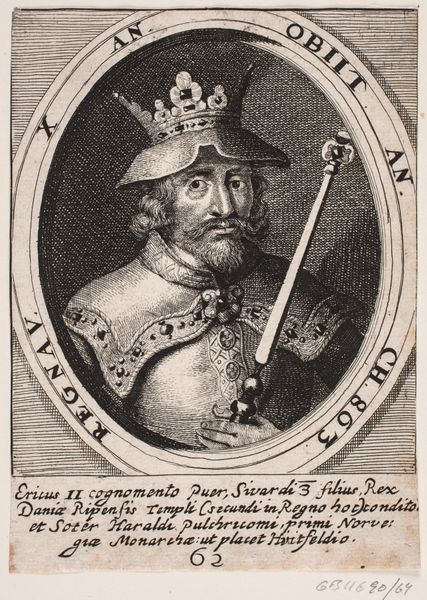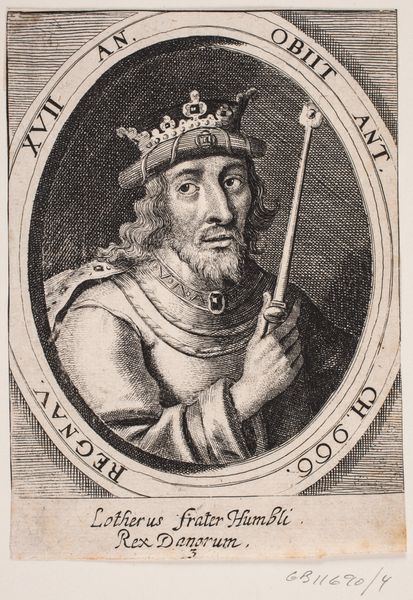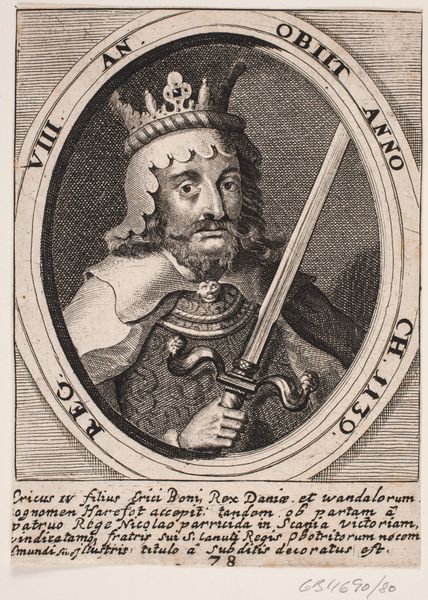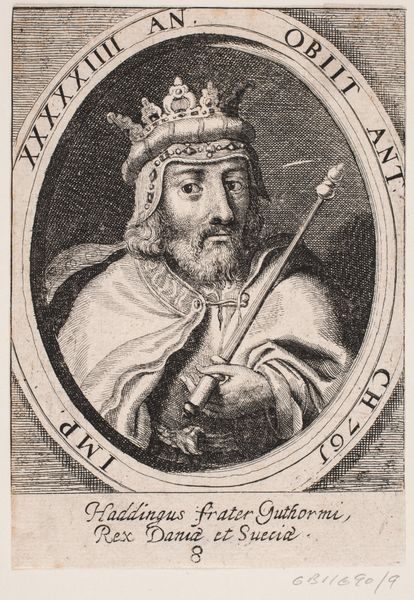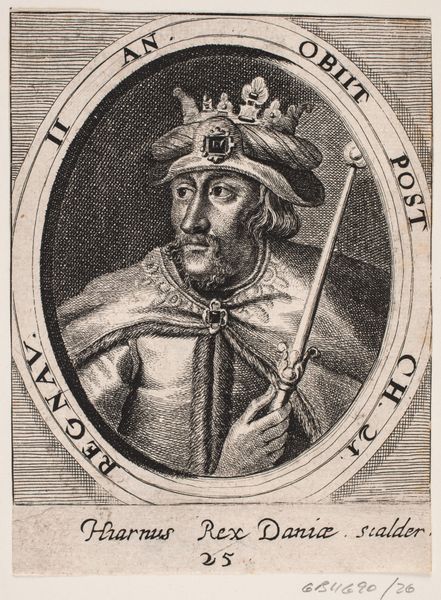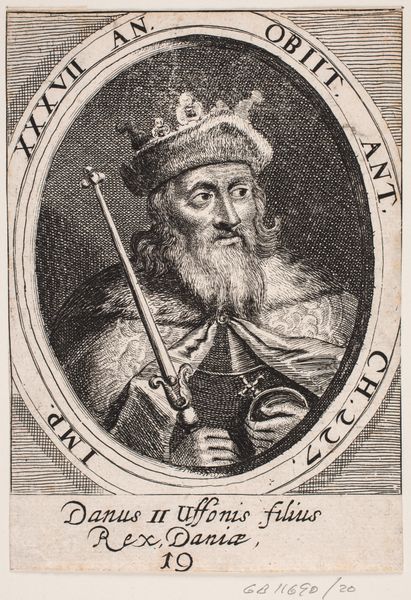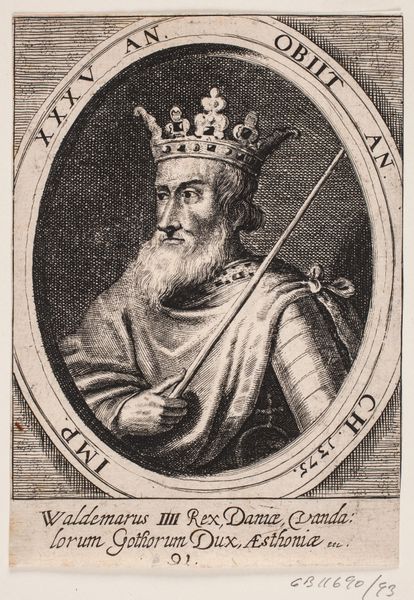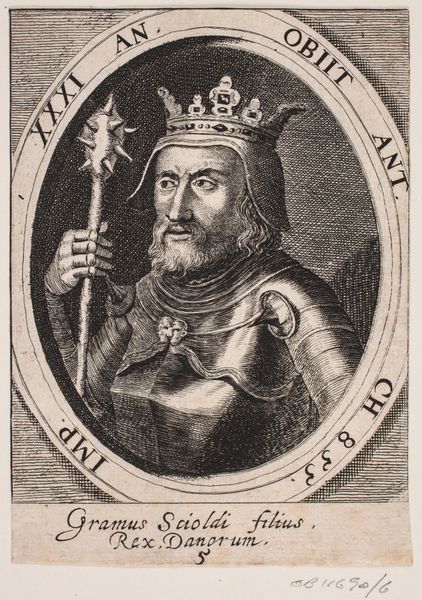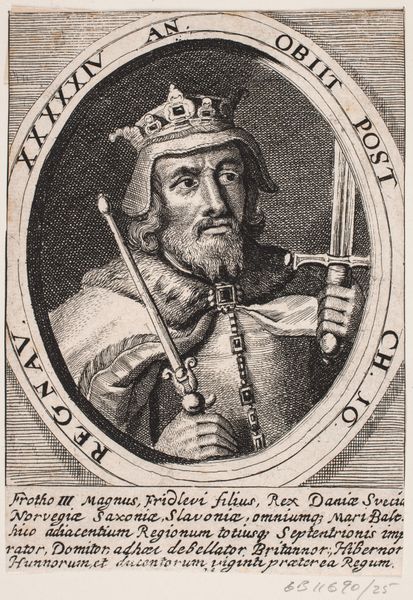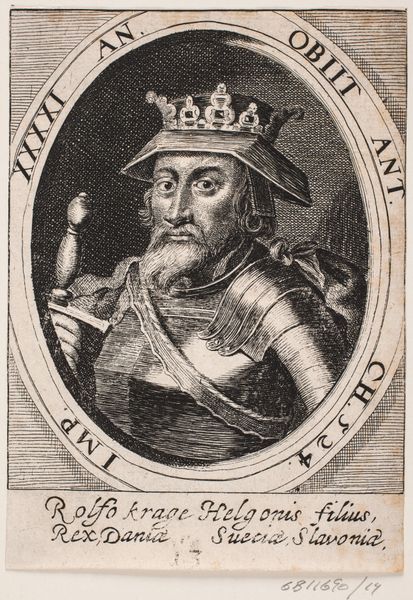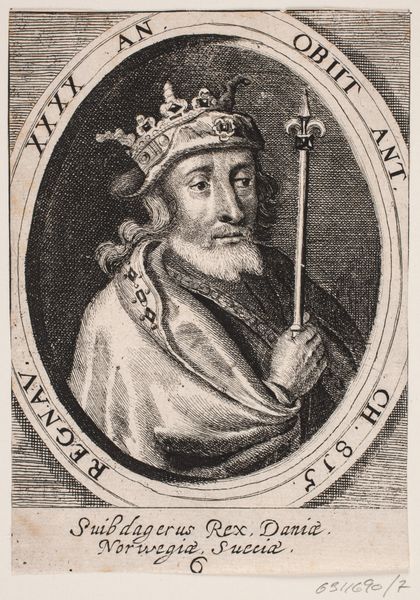
print, engraving
#
portrait
#
medieval
# print
#
history-painting
#
engraving
Dimensions: 140 mm (height) x 100 mm (width) (bladmaal)
Curator: This engraving, dating back to 1646, depicts Erik of Pomerania. Editor: It's striking how severe and unyielding his gaze is, even through the filter of time and engraving. Curator: Indeed. Notice the inclusion of royal regalia: crown, armor, and sword, signifying power and authority in their symbolism. Erik held dominion over Denmark, Sweden, and Norway, you see, and that weighty scepter suggests his reign—the image projects a clear sense of kingship. Editor: But there's a melancholic cast, almost as if a cloud obscures the bright gleam one might anticipate. Curator: Well, the inscription states he "Obiit" in 1459, a memento mori, perhaps a reminder of mortality even amidst such grandeur. It would appear that even powerful rulers can meet sorrow, displacement. What do you read in it? Editor: The composition is rather static; the figure almost feels trapped within the oval frame, reinforcing a sense of his fate—a king rendered still in time. There are hard lines throughout this rendering as it presents his features; it comes across somewhat sterile. Curator: What about the way the sword is positioned? Does it appear readied for battle, a standard indication of command, or something more complicated? Editor: More complicated. Instead of strength, there is tension there, especially given how directly the blade intersects the face. Curator: I concur; there is much to this print. Each detail offers not only aesthetic observations, but potential insight to ponder his personhood through symbol, through design, through expression. Editor: Looking closely, that play between surface and implied narrative adds nuance to an initial experience. Thanks to the textures rendered throughout, an image like this can have new lives over centuries, and invites multiple modes of discovery.
Comments
No comments
Be the first to comment and join the conversation on the ultimate creative platform.
